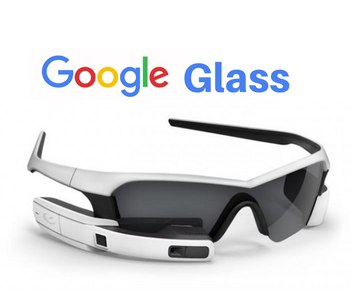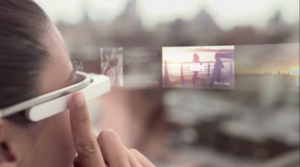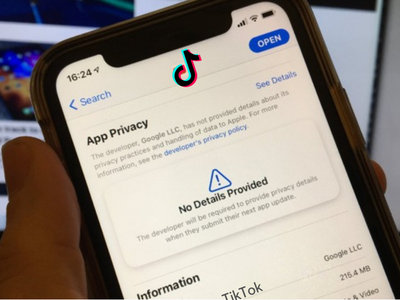
Glass Is Brittle But One Glass That Is Flexible-Google Glass
To define Google Glass
Google Glass is a wearable Android gadget that can be voice-and motion-controlled and project information into the user’s field of view.
Using visual, audio, and location-based inputs, Google Glass offers an augmented reality experience. For instance, a user might instantly get flight status information upon entering an airport.
When the first version of the glasses was introduced in 2013, consumers immediately expressed concern about privacy invasion. Google Glass symbolised the unavoidable recording of daily life. Google initially tried to reposition the glasses as a tool for professionals like doctors or factory employees. However, worries persisted, and in 2015, Google stopped all work on the Glass project.
Work on the Glass Enterprise Edition was resumed in 2017. This project’s relaunch concentrated all of its efforts on developing a solution for industrial settings like factories and warehouses. A new version of Google Glass, the Glass Enterprise Edition 2, was released in 2019.

How to use Google Glass
An Android-based operating system serves as the foundation for Google Glass. The OS may run Glassware, specially designed application virtualization software tools. Instead of a full desktop, a user can receive an app from a glassware device. The glasses contain a camera for taking pictures and movies as well as built-in Wi-Fi and Bluetooth connectivity.
The smart eyewear processes command from the wearer using motion and voice recognition. Additionally, the rim of the glasses has a touchscreen. The device uses a private channel of communication that can only be accessed by the user to send small packages of information directly to the wearer through a micro-projector to deliver the required information.
Are You Thinking To Buy New Inkjet Printers?? Then Click HERE To Know More About Top 5 Inkjet Printers.
Then, Google Glass displays images on the lens using a field sequential colour (FSC) liquid crystal on silicon (LCOS) system, enabling wearers to see the image in its genuine colours.
A colour television system that uses FSC sends the primary colour information in continuous pictures, leaving it to the human eye and brain to compile the data into a colour image. A type of video display technology is LCOS.
Google Glass functions
The tiny semi-transparent screen on the upper right side of the spectacles is Google Glass’ main selling point. This display is in charge of communicating information to the user and only takes up around 5% of the wearer’s natural field of view.
Wearers must look up to see the screen, which puts it out of their direct line of sight. This functionality is crucial since improper display positioning could result in major safety issues.
1. Google Glass Explorer Edition XE V2

2. Rokid Air AR Glasses

3. LC-dolida Bluetooth Sleep Mask Sleep Headphones Smart Auto

4. HP Windows Mixed Reality Headset Developer Edition VR1000-010 
Google Glass also has additional functionalities, such as:
The capacity to record and share images and videos of what the user is experiencing using Google Hangouts.
The choice to use Wi-Fi or a smartphone’s data connection to access the Google search engine through the glasses.
The capability of receiving translations through a screen directly on the wearer.
Visual reminders to carry out specific duties or tasks that will cause a notification to show on the user’s screen each time they glance at a specific object.
The ability to receive event and meeting reminders by syncing the glasses with calendars on PCs or mobile devices.
You can make audio and video calls with it. Instead of speaking face-to-face, wearers can show the other person exactly what they are viewing during video chats.
The capacity to voice-dictate responses to emails and text messages.
Collaboration with Google Maps to deliver detailed instructions using a screen-mounted map.
A device’s capability to react to facial and head motions, such as letting the user tilt their head to scroll across a page or control the device with their eyes.
To Know More About Top 5 Best Earbuds And Reviews Click HERE.
Advantages of Google Glass
Glass Enterprise Edition 2, the most recent version of Google Glass, is intended mainly for business use, particularly in settings like factories, warehouses, and hospitals. The glasses’ advantages in these circumstances include time and money savings as well as increased safety.
The hands-free function and the ability to always be linked to the network increase worker safety.
The head-mounted display’s constant availability in the user’s field of vision is another advantage. Wearers can thereby transmit and receive information and notifications without having to open their smartphones or other mobile devices.
Another advantage of the product is the possible usage of Google Glass by kids with autism. Numerous studies are looking into the possibility of using Google Glass to help autistic children engage with others more socially.
Glass Enterprise Edition 2
The most recent version of Google Glass, Glass Enterprise Edition 2, has a USB-C port for quicker charging, a better camera, and an increase in processing power thanks to its new use of Qualcomm’s Snapdragon XR1 CPU, which is made exclusively for augmented and virtual reality systems. The Google Glass device can incorporate sophisticated machine learning and computer vision capabilities thanks to the XR1 chip.
The style of the spectacles has been enhanced with safety frames, making them more functional and adaptable in a variety of professional settings. Other enhancements include support for Android Enterprise Mobile Device Management, a larger battery with longer battery life, and enhanced Wi-Fi and Bluetooth connections.
Google has been developing the third iteration of smart eyewear since the release of Edition 2.
Are You Looking For Best Handheld Devices For Gaming Consoles Then Click HERE.
Google Glasses’ third generation
According to reports, the third generation of Google Glasses has finished the development phase and is currently being produced in pilot quantities by manufacturers.
The Google Glass product line is now being supplied by Pegatron Corporation in partnership with Quantra Computer. Quantra was the only supplier in the past.
The battery life of the upcoming generation of glasses will be sacrificed in order for them to weigh as little as a typical pair.
Google’s third generation of Google Glasses will have a smaller battery in order to produce a lighter, more natural-looking pair of spectacles. Users can only use their devices for 30 minutes before they must recharge.
The third-generation model won’t follow the trend of increasing battery capacity because the Google Glass Enterprise Edition 2 has an 820 mAh battery and the prior model had a 780 mAh battery.
The glasses should be available on the market by the end of the year, preferably with a price that takes the improvements into account.
How Did Google Glass Fare? How Google Glass Prepared the Ground for the Revolution in AR
Smart glasses with an optical head-mounted display are sold under the name “Google Glass.” Google stated they will no longer be making a consumer version of the glasses just two years after they were first shown.
A poor product-market fit was the main reason Google Glass failed. The creators of the glasses thought that publicity would increase sales more than actual user problems the glasses would address.
Additionally, Google Glass had to compete with far more popular smart gadgets like watches, speakers, and televisions. They received flak for being able to secretly record people and for serving no particular purpose particularly well.





Nice post. I learn something totally new and challenging on blogs I stumbleupon on a daily basis. It will always be interesting to read content from other writers and use something from other sites.